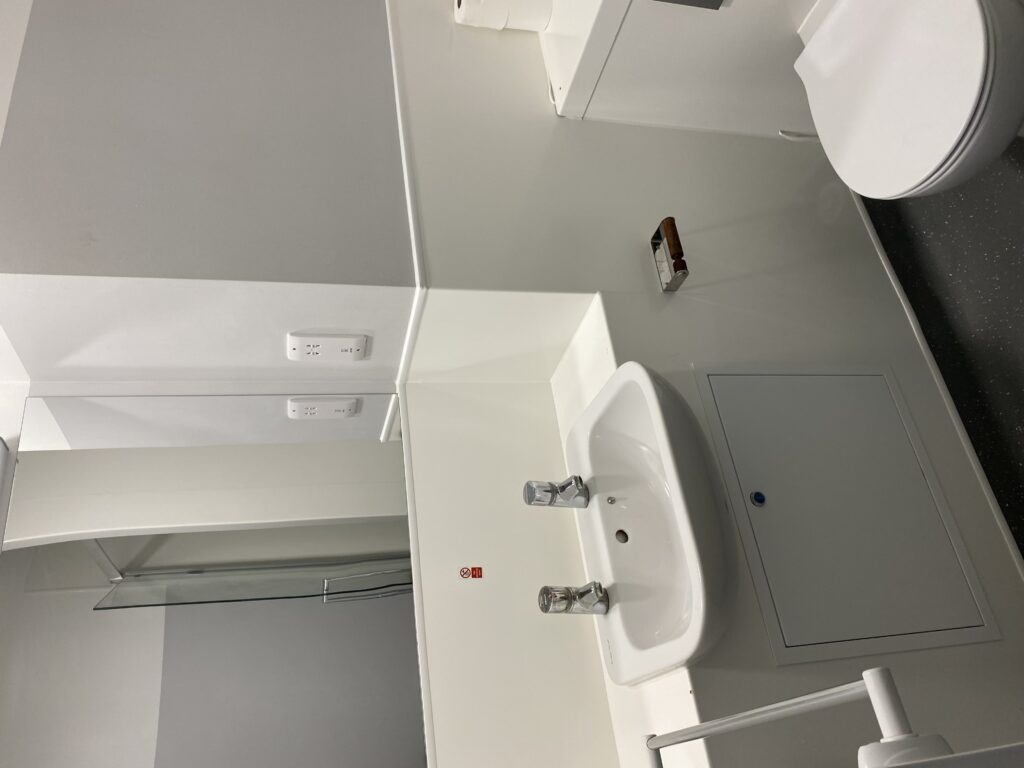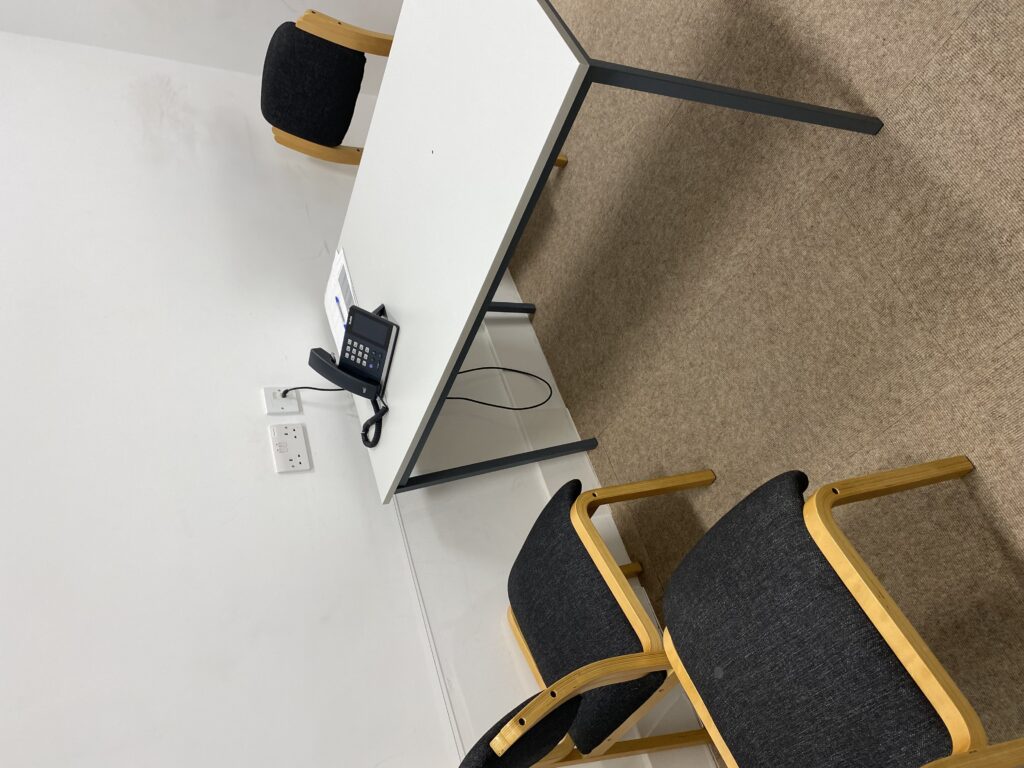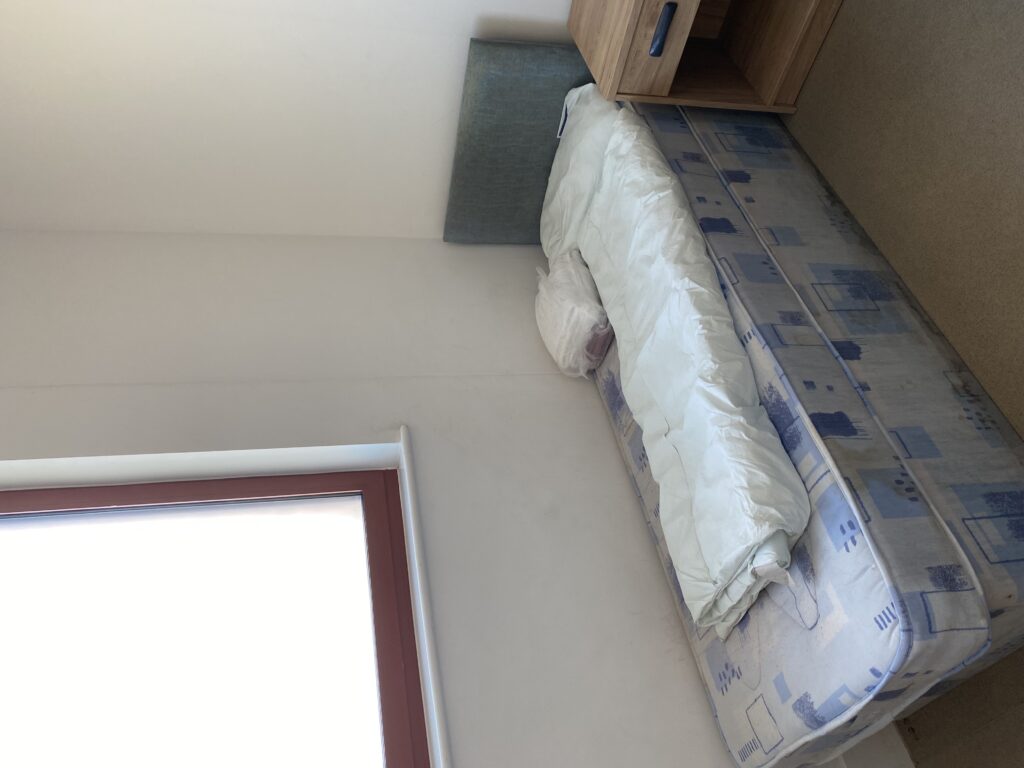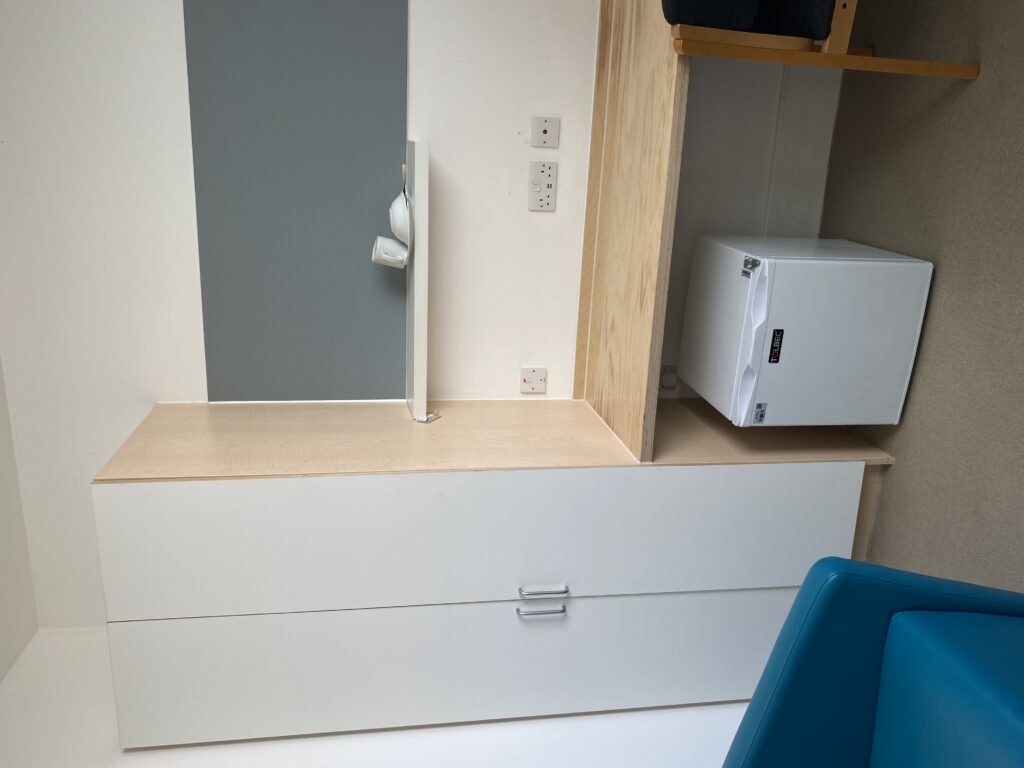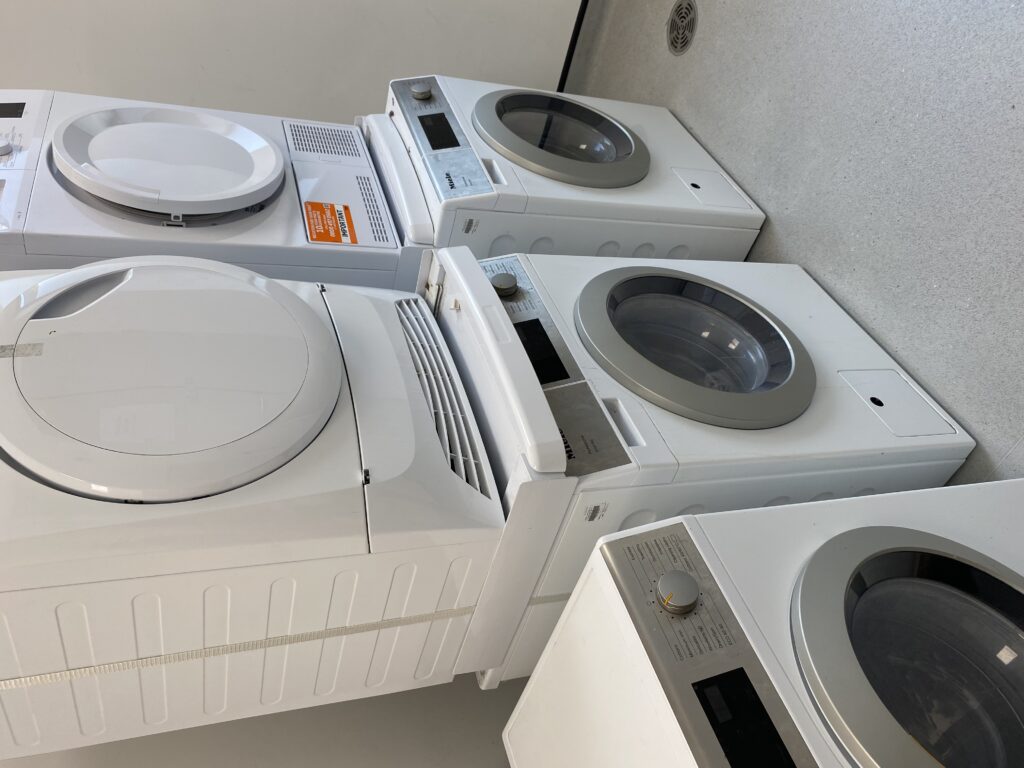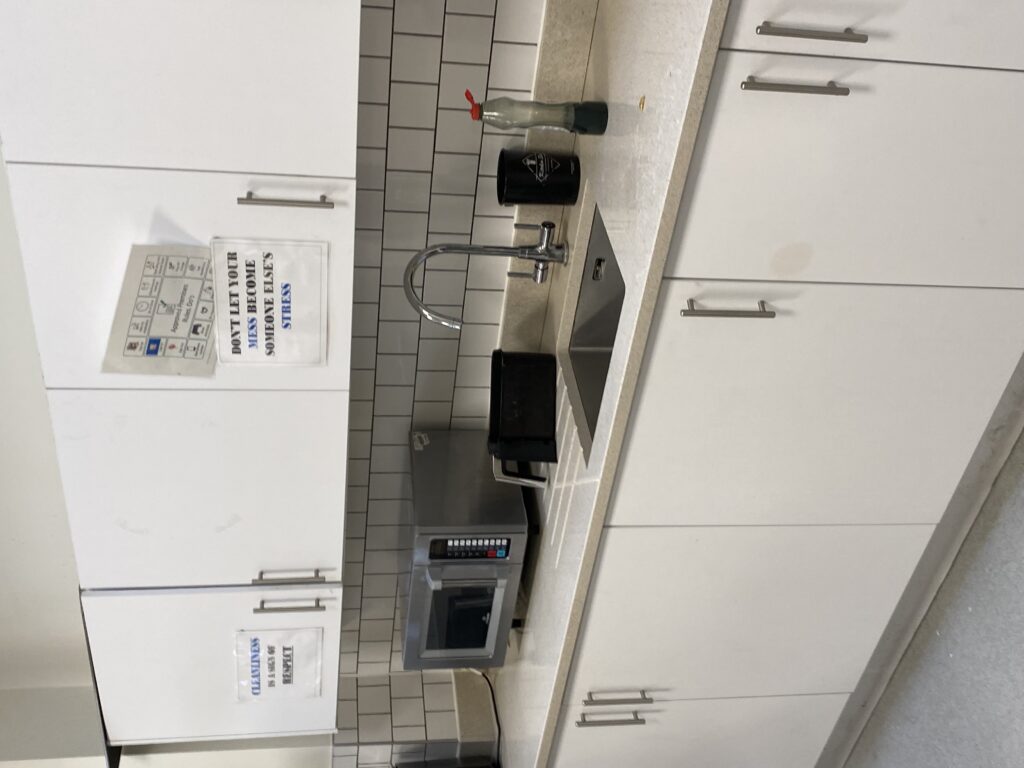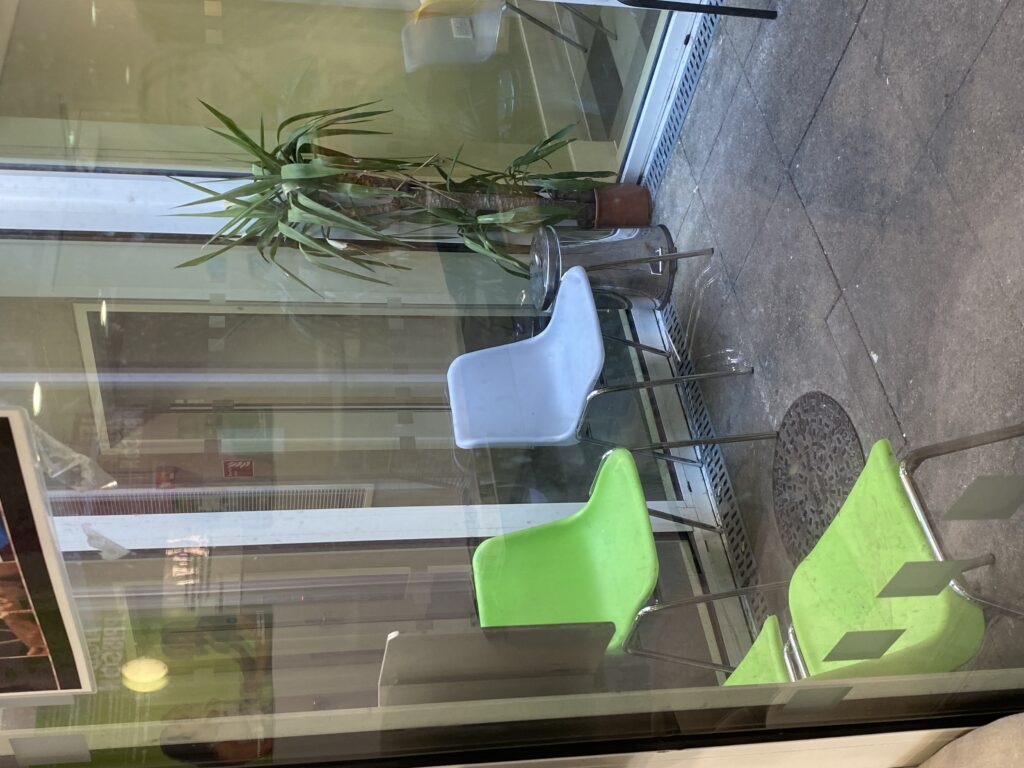An inspection of Joyce Meggie House Approved Premises
Foreword (Back to top)
This is the fourth inspection in our programme of approved premises (APs) inspections.
Although there were strengths, we have rated Joyce Meggie House as ‘Requires improvement’, due to an insufficient staffing model, the absence of meaningful quality assurance, and the resulting deficiencies in practice that inspectors found.
Staff were overall motivated and trying their best, and the building itself was modern, clean, and well equipped. There were strong partnerships with local services, and the team were working hard to provide support to a large number of residents.
However, there were serious concerns that must be addressed. Staffing levels were too low for the number and complexity of residents, and this was affecting the quality of care and safety. Plans to support residents at risk of self-harm or suicide were often poorly completed, and medication procedures were not always safe or properly managed.
As a consequence of the concerning staffing arrangements and the absence of quality assurance support for Joyce Meggie House, an organisational alert was issued to HMPPS after the conclusion of our fieldwork.
The team at Joyce Meggie House is doing important work under significant pressure and despite the demands, work to protect the public was good. With better support, clearer oversight, and stronger systems, I am confident that this AP can improve and make a positive contribution to the rehabilitation of its residents.
We hope this report helps drive the changes needed to ensure that residents are safe, supported, and given the best chance to resettle successfully back into their communities.
Martin Jones CBE
HM Chief Inspector of Probation
Background information (Back to top)
| Total number of approved premises nationally | 104 |
| Length of time on site by inspectors, including out-of-hours activity | 2 days |
| Total number of bedrooms at Joyce Meggie House | 36 |
| Average length of residents’ stay at Joyce Meggie House | 39 days |
Nationally
APs provide 24-hour monitoring and supervision to their residents and are expected to engage them in interventions to reduce the likelihood of further offending. There are 104 APs in England and Wales. Most are men only, with eight being women only. Twelve are psychologically informed planned environments (PIPEs), co-commissioned with NHS England. Fourteen APs are independent, including five of the eight APs for women. These are led mostly by third-sector providers. Independent APs (IAPs) are delivered under contract and in partnership with HM Prison and Probation Service (HMPPS).
Locally
Joyce Meggie House (JMH) AP opened in February 2022. It is a purpose-built modern property based in Southwark, London. It has a maximum occupancy of 36 men, aged 18 and over. All rooms are single occupancy and en-suite. The AP provides a kitchen facility for residents to prepare their own meals. At the start of our fieldwork, there were 34 residents.
Our inspection methodology
We inspected JMH during the week beginning 22 September 2025. This included the off-site inspection of eight cases relating to individuals who were either still resident at the AP or who had recently departed. While carrying out on-site fieldwork, we observed practice and interviewed managers and staff, individually and in groups. We also received feedback from 10 current residents about their experiences at JMH. Our fieldwork also included the AP’s ‘out of hours’ activities – specifically, the early morning and evening shift handover processes and a detailed analysis of recent enforcement and recall decisions.
Ratings (Back to top)
| Fieldwork started September 2025 | Score 6/15 |
| Overall rating | Requires improvement |
| Standard | Score | Rating |
| Leadership | 1 | Requires improvement |
| Staffing | 1 | Requires improvement |
| Safety | 1 | Requires improvement |
| Public protection | 2 | Good |
| Rehabilitation | 1 | Requires improvement |
Recommendations (Back to top)
As a result of our inspection findings, we have made the following recommendations that we believe, if implemented, will have a positive impact on the quality of services delivered at Joyce Meggie House.
The Joyce Meggie House leadership team should:
- develop and publish a documented vision for the AP that clearly sets out its delivery model, aims, and objectives
- engage all staff in a programme of training and development that will improve practice to keep residents safe and help them to rehabilitate
- strengthen management oversight by ensuring that key documents, such as residence plans and safety and support plans (SaSPs), are regularly reviewed, and feedback is provided
- provide formal, structured supervision for all staff, to improve oversight and enhance the quality of casework
- adapt the kitchen facilities to meet religious and cultural needs, including separate preparation areas for halal food, to prevent contamination.
HM Prison and Probation Service should:
- provide immediate support to Joyce Meggie House to ensure that all practice, systems, and processes are safe and contributing positively to the wellbeing and rehabilitation of its residents. This should include support to train and develop the staff group
- assure itself that all APs have sufficient quality oversight systems in place to ensure the safety and wellbeing of residents and the wider public
- ensure that all AP managers have sufficient capacity and resources to provide effective oversight, and drive improvements in practice
- urgently complete the review of staffing, resourcing, and recruitment procedures for APs, to promote safe and rehabilitative practice.
Leadership and governance (Back to top)
| Rating | |
| Requires improvement |
Strengths:
- The manager held strong values of fairness, kindness, and integrity, and worked hard to embed these throughout the AP. Staff felt supported and they respected the manager.
- There was collaboration with various organisations and agencies to aid public protection and promote access to interventions and support for residents. For example, relations with the police were strong and they were in regular attendance at the AP. Staff from Southwark Council’s housing department attended JMH every Monday to provide accommodation advice and support to residents. The manager had also worked hard to develop a positive relationship with a general practitioner surgery located close to the AP and which all residents were registered with. Meetings were scheduled with the surgery to maintain the partnership.
- JMH achieved its ‘Enabling Environment’ (EE) award in April 2025, an expectation for all APs in England and Wales. In relation to the AP’s culture, the EE assessors stated that: “JMH places great emphasis upon a culture of belonging and focusing on the quality of relationships”.
- A weekly residents meeting was chaired by the manager and attended by all residents and staff. This allowed for regular discussion and gathering of residents’ views about the AP’s environment and day-to-day issues.
- The area manager represented the AP at the national monthly resident diversity forum, which was also attended by a JMH resident representative. A standard agenda ensured that every meeting considered feedback from across the national resident population about what was working well and what needed to improve. Learning was disseminated by the area manager to the APs in the division.
- There was a clear meeting structure in place within the region and at JMH, with monthly management meetings, reflective practice sessions, performance meetings, and team meetings. These meetings aimed to ensure that all staff were kept up to date with changes in practice and could regularly learn from each other through reflection and team discussion.
- JMH had a diverse staff group which reflected the local community in Southwark, and the manager highlighted the benefits that this brought for the resident group, in terms of promoting their sense of belonging and providing support. The team was also experienced in working with people with disabilities, as the three accessible rooms were often used for people with additional support needs.
- Equity, diversity, and inclusion information was gathered at the induction stages of the supervision process, and we observed in our casework review that the diversity needs of residents were acknowledged and considered in six of the eight inspected cases.
Areas for improvement:
- The AP was a busy and charged environment due to its high number of residents, frequent arrivals and departures, and a complex resident profile. Management of this situation was difficult, given the insufficient staffing picture, which was impacting on the AP’s culture and the experiences of residents. Although staff told us that they wanted to do more for residents, they described the workload pressures as an obstacle to providing a good-quality service. Some residents viewed a small number of staff as difficult, and at times “rude”.
- While there was a performance-focused culture and national service level measures were being achieved by JMH, quality assurance activity was lacking. There was minimal management oversight recorded in the cases inspected, apart from at the allocation stage, with key processes such as residence plans and SaSPs1 lacking management comments and countersignatures. Workload had directly impacted on management’s ability to provide robust quality assurance. More support was needed at both a national and regional level to provide assurance that a good-quality service was being provided on the frontline.
- Although the manager articulated a clear vision, and priorities centred on providing effective public protection, risk management, and rehabilitation, this information was not yet documented or explicitly on display for residents and staff.
- The kitchen at JMH had not been adapted for those who required separate food preparation equipment due to their religious beliefs. This was easily rectifiable and needed to be actioned as soon as possible.
- Despite efforts, JMH had not yet secured a medication delivery service from a local pharmacy.
Staffing (Back to top)
| Staff are enabled to deliver a high-quality service for residents. | Rating |
| Requires improvement |
Strengths:
- During our inspection, staff were warm and friendly, and seemed motivated and passionate about their work, albeit open and realistic about the challenges they faced.
- Although the basic staffing resource was not adequate, it was fortunate that it was generally stable, with relatively low sickness levels and high retention.
- The manager ensured that all team members completed the mandatory training required of all AP staff. However, staff were critical of the training offer and the overreliance on e-learning. The manager was enthusiastic about the additional training being offered by the national performance and quality team and had referred staff to some of these events.
- The manager operated an open-door policy and maintained a visible presence among staff. Supervision took place every six to eight weeks but notes were not always provided. The offender personality disorder (OPD) pathway lead attended the AP monthly to provide staff with a structured reflective space, and to support them with developing their skills and understanding of working with individuals with complex needs.
- Given the staffing pressures, JMH relied on the team working together to provide cover and support for one another.
- We were given examples of additional staffing being brought in when particularly complex or high-profile residents were allocated to JMH and when additional monitoring was needed in accordance with multi-agency public protection arrangements (MAPPA) actions, for example. Management negotiated funding, usually from probation delivery units (PDUs), when this was required.
- The manager promoted staff safety and wellbeing, and we observed a range of procedures and initiatives in place, from the OPD reflective practice sessions to appropriate panic alarm provision and testing.
Areas for improvement:
- JMH was staffed in line with the current staffing model for APs. However, due to the intensity of the workload, this was insufficient and was clearly affecting the residents’ experience and the culture within the AP. Although policy allowed for additional residential worker (RW) cover if there were to be four or more new arrivals at the AP within a 24-hour period, the basic RW staffing arrangement was insufficient, with only two on shift at a time, to provide supervision and monitoring to 36 residents.
- The waking night shift arrangements were also not adequate for the size of this AP, with one RW and a residential assistant from an external provider on duty for each shift. There were limitations in the support that they could provide and so most RW tasks fell to one individual during the night.
- Due to long-term sickness, senior management oversight was being provided by another area manager in the region, in addition to their own role and responsibilities. It was positive that the covering manager was familiar with the AP, having provided cover previously, but the situation was not sustainable.
- Given the high occupancy level, the AP manager’s role was extensive, having to deal with – among other things – all behavioural issues relating to residents, community relations, all enforcement decision-making, overseeing the staff rota and ensuring sufficient staff cover, and providing management oversight and quality assurance, and line management to all staff. The manager was highly motivated to do more within the AP, and acknowledged that administrative tasks were not always completed due to the volume of daily demands involved in running it. It was the inspection team’s view that more management resource was needed urgently.
- Management oversight in the cases reviewed was only evident at the point of allocation. We saw no examples of residence plans or SaSPs being countersigned, which was a concern. We received mixed feedback from residents about the quality of care provided by staff and their relationships with keyworkers.
- As a consequence of the concerning staffing arrangements and the absence of quality assurance support for JMH, an organisational alert2 was issued to HMPPS after the conclusion of our fieldwork.
- It was disappointing that resident feedback was so mixed about the approach of some staff members. In only three of the eight inspected cases were staff deemed to have met the needs of residents. There was clearly a desire by staff to do more, but they were overwhelmed by the high volume of residents and workload demands.
- The quality of case recording was an issue, and staff were struggling to record accurately the work they were undertaking. Overall, the quality of casework from the eight cases reviewed, and those dip-sampled post-fieldwork, was poor.
- Staff did not have access to a specific area to use during breaks and were using the residents’ group room when they needed respite, which was not ideal.
Safety (Back to top)
| The approved premises provides a safe, healthy, and dignified environment for staff and residents. | Rating |
| Requires improvement |
Strengths:
- Our review of recent enforcement and recall decisions showed the team’s ability to assess and manage poor behaviour and escalate emerging risks within the AP. We were also provided with a good selection of examples showing the range of actions and sanctions implemented by management in response to poor compliance with AP rules.
- We witnessed staff relaying information to one another regarding observations about individual residents, in both formal handovers and outside of these formal processes. Formal handovers were recorded appropriately.
- Welfare checks were carried out in accordance with policy and these were recorded on nDelius.
- A key positive feature was that rooms were single occupancy, with en-suite facilities that were generally clean and decent. As a relatively new property, the exterior of the building and communal areas were also clean and well maintained. There was a good relationship with the regional facilities management team, with repair and work orders actioned in a timely fashion. A maintenance worker attended the AP one day a week and was able to deal with most repairs.
- Personal safety alarms were provided to all staff and visitors, and were tested often, as were fire alarms. There was extensive closed-circuit television (CCTV) camera coverage throughout the AP. The CCTV quality was good, and we observed staff using it to monitor residents’ behaviour throughout our fieldwork.
- There were three accessible/adapted rooms for people with mobility issues. The whole of the AP was accessible by wheelchair users and there were lifts to all floors. Every room was also fitted with sprinkler systems, which meant that arson risks could be managed effectively. Residents assessed as posing a direct risk of arson were allocated to rooms at the front of the building, which were easier to access by emergency services.
Areas for improvement:
- Effective management of self-harm and suicide risks are a key priority within APs, given the heightened vulnerability of individuals transitioning from custody to the community, and particularly in the early weeks following release. Although appropriate action was taken by staff to support residents who were at risk of self-harm and suicide in three of the inspected cases, our review of SaSPs identified significant issues, as follows:
- whole sections were often empty or marked ‘N/A’ (not applicable) and did not reflect the presenting risks and needs of the individual
- in some, historical suicide attempts and mental and physical health diagnoses were not factored into support planning
- incorrect forms were often used
- most were completed without an investigative approach and relied solely on residents’ self-reports
- SaSP reviews often lacked analysis, assessor comments, and countersignatures.
- We also identified some poor practice in relation to the storage and administering of prescribed medication, as follows:
- there was an absence of daily auditing and review. In one example, a resident had not collected their medication in four days and this had not been acted on by staff
- medication in possession (MIP)3 assessments were not visible in case records. This was particularly worrying as most residents received their medication in this way. MIP assessments required ongoing review and decision-making should have been visible in case records
- the staff member administering the medication process at the time of our review had not been trained and, in addition, they were completing this task on their own, which was against safe working practices and organisational policy
- the individual storage cupboards holding the controlled medications were left open, when they should have always been locked
- there was insufficient management oversight of the medication process.
- The deficits relating to the medication process and management of self-harm and suicide were also identified as priorities within the organisational alert, with actions under way to address them.
- Although every resident had their own room, a few of them told inspectors that they did not have a window that opened, and that their room could get too hot. The building did not have air conditioning.
- The beds provided to residents were too small, although these were in the process of being replaced throughout the AP.
- The AP did not provide adjusted kitchen facilities for the preparation of halal foods and, as a consequence, affected residents were worried about contamination. This required urgent attention.
Public protection (Back to top)
| The approved premises effectively protects the public. | Rating |
| Good |
Strengths:
- JMH was appropriately represented at MAPPA meetings, with the AP manager attending all meetings and the area manager attending Level 3 meetings. The AP manager was also a core member of the local Level 2 MAPPA panel and attended all such meetings, even for cases that were not resident at JMH. This was an effective way to build strong relationships with key partners, while also raising the profile of APs and supporting wider public protection.
- Although the recording of enforcement activity was inconsistent in the inspected case sample, we were provided with other examples of decision-making and recording from the previous three months, which showed good practice overall.
- The response by JMH to a recent serious assault committed on the premises, and the enforcement decisions surrounding this, had been timely and appropriate. The relaying of information to probation practitioners had been robust and ensured that swift enforcement action had been taken to protect the victim and the wider public.
- While our sample did not include any examples of child or adult safeguarding cases, the manager provided examples where the team at JMH had taken appropriate action in both areas. Staff had completed the required training.
- Although information sharing with probation practitioners was not always recorded, the manager described relationships with PDUs as generally positive and beneficial, particularly in the context of MAPPA. Being on the core Level 2 MAPPA panel was helpful for building and maintaining these relationships. The manager attended the Southwark PDU meeting, to brief its teams about JMH and to hold question and answer sessions. This supported ongoing communication and integration between the AP and the local probation teams. In addition, the manager facilitated placements at JMH for trainee probation practitioners, which supported their development and was intended to improve collaboration between APs and PDUs, over time.
- We observed both morning and evening handovers, and these were comprehensive and appropriately recorded, with a discussion about every resident. Staff used professional curiosity in these meetings and it was clear from discussions that staff made relevant observations about residents throughout the day.
- In addition to the morning shift handover, there was a daily morning meeting at 9.30am which was led by the manager and attended by all staff. This ensured that everyone was briefed and updated on key events and decisions made about enforcement and other issues.
- We saw examples outside of the core inspection sample where drug testing had been used to help monitor risks. Similarly, additional drug testing had been implemented in light of the recent serious assault and the circumstances surrounding it.
Areas for improvement:
- The recording of enforcement activity and decision-making was insufficient in the cases inspected.
- There was an absence of liaison and information sharing with probation practitioners in the inspection case sample.
- Drug and alcohol testing was not always recorded.
Rehabilitation (Back to top)
| The approved premises delivers activity to reduce reoffending. | Rating |
| Requires improvement |
Strengths:
- There was collaboration with various organisations and services to ensure access to interventions and enable effective rehabilitation. These included:
- Southwark Council’s housing department, staff from which attended the AP every Monday to provide accommodation advice and support to residents
- FareShare, an organisation that distributes surplus food to charities across the UK. FareShare delivered free food to the AP every Monday, which was particularly useful at JMH as a self-catered facility, and enabled residents who struggled to budget or cook their own meals to have access to food
- St Giles Trust, to which staff made referrals for residents who needed additional housing support
- OwenCo, which provided a fortnightly personal development groupwork activity for residents.
- The manager had recently established an agreement with The Gym Group for eight rolling gym memberships for residents every month. This was an impressive innovation and would help residents develop healthier lifestyles and enable them to make constructive use of their time while at JMH. Although there was no formal arrangement in place, the AP regularly signposted residents who needed substance misuse support to Change, Grow, Live, the local provider of drug and alcohol services.
- There was a schedule of rehabilitative activities and an RW whose primary focus was to plan and deliver these, with support from colleagues and an outside agency, in the case of the personal development group. There was also a fortnightly men’s health group, housing support every Monday, and a regular Thursday coffee morning.
- Records showed that the induction process was appropriate, and all standard paperwork was explained to residents and uploaded to case records. In terms of timeliness, JMH performed consistently well against national expectations for first- and second-stage inductions, and just over half of the residents interviewed during fieldwork (six out of 10) said that their induction had been suitable and timely.
- We were made aware of examples of staff supporting residents to move on from the AP, although there were limitations, and obtaining accommodation in the local area was difficult, very expensive, and often out of reach for many residents. Nevertheless, supporting residents with applications to other supported housing options, including the Tier 3 Community Accommodation Service, was standard practice, although not always visible in case records due to poor recording. Having a representative from Southwark Council’s housing department at the AP every Monday was a valuable and well-utilised resource.
Areas for improvement:
- Although JMH was in the process of tendering for an outside agency to provide cookery classes, this had been a long and drawn-out process. Some residents told inspectors that they needed these, and were frustrated that there was currently no support to help them develop their cooking skills, despite JMH being a self-catered AP. Residents also asked for more support with finances, benefits advice, and general guidance about the local area. Most of the residents interviewed wanted more to do at JMH.
- In seven of the eight inspected cases, rehabilitative activities were not aligned with the work being delivered by the probation practitioner. For example, in some cases, records indicated that residents had mental health problems, but these were not mentioned in the residence plans or taken account of in the work undertaken at the AP. In another case, an individual with previous drug misuse issues was not being drug tested, according to records, even at the induction stage.
- Residence plans had not been completed (or at least not been uploaded to nDelius) in six of the 10 inspected cases. The two plans that were visible to inspectors were of poor quality and neither had been completed before the resident’s arrival, even though there had been sufficient time in each case for this to happen.
- None of the residents in the inspected cases received any contact from the AP before arrival, a vital tool to promote compliance and engagement. While three of them were short-notice placements and it might therefore have been difficult to make contact, there had been plenty of time for pre-arrival contact in five of the cases. Of the 10 residents interviewed, only one had received contact from the AP before their arrival.
- Some residents said that they sometimes felt that staff had limited time for them, which appeared to reflect the impact of the high workloads and operational pressures at JMH.
- Records showed that keywork delivery was inconsistent, in terms of both its quality and frequency. While half of the residents interviewed told inspectors that their keywork was useful, others said that it was focused mainly on signposting to other services.
Press release (Back to top)
Further information (Back to top)
This inspection was led by HM Inspector Stuart Tasker, supported by a team of inspectors and colleagues from across the Inspectorate. We would like to thank all those who helped plan and took part in the inspection; without their help and cooperation, the inspection would not have been possible.
Images (Back to top)
